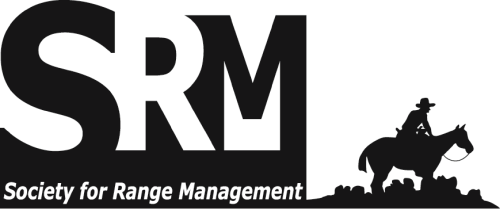Livestock and wildlife managers must be aware of the nutritional dynamics of forages to sustain satisfactory growth and reproduction of their animals and assure fair value for pasture. Despite a history of livestock grazing in the northern Great Basin, annual and seasonal mineral concentrations of many of the region's prominent grasses have not been measured. We addressed this problem with monthly sampling (April-November) of 7 cool-season grasses at 6 sites during 1992, a drier than average year (86% of mean precipitation), and 1993 when precipitation was 167% of average (255 mm). Grasses included: Poa sandbergii Vasey, Bromus tectorum L., Sitanion hystrix (Nutt.) Smith, Agropyron spicatum (Pursh) Scribn. & Smith, Festuca idahoensis Elmer, Stipa thurberiana Piper, and Elymus cinereus Scribn. & Merr. Phosphorus, K, Ca, Mg, Mn, Fe, Cu, Zn, and Na were assayed, and initial statistical analysis was a split-split-plot with main effects of species, years, and months and all possible interactions. For a preponderance of the minerals, (Zn and Na excluded) the 3-way year x month x species interactions were significant (P < 0.05) indicating that main effects did not function independently. Generally, mineral concentrations averaged about 41% higher among the grasses for the drier of the 2 years (1992). Copper, Zn, and Na concentrations were below required levels for beef cattle (9.9, 28.8, and 672 mg kg-1, respectively) among all the grasses for all sampling periods. Seasonally deficient minerals included Ca, Mg, P, K, and Mn. Calcium and Mn were largely deficient (< 3.2 and 1.15 g kg-1, respectively) for beef cattle early in the growing season with levels rising as grasses matured. Seasonal patterns of Mg were variable among the grasses, increasing in some as the season progressed, remaining stable among others, and declining with maturity in yet others. Phosphorus and K levels were typically adequate (> 1.94 and 5.76 g kg-1, respectively) for beef cattle early in the growing season and declined to deficient levels by July and August. Iron was of no concern, because concentrations were more than adequate for cattle (> 48 mg kg-1) among all the grasses for all seasons. While a mixed stand of forages can extend the period of adequate mineral nutrition for cattle in some instances, we suggest that a supplement be available season-long on northern Great Basin rangelands and that the formulation include at least Ca, Mg, P, K, Cu, Zn, Mn, and Na in available forms and proper ratios. The Journal of Range Management archives are made available by the Society for Range Management and the University of Arizona Libraries. Contact lbry-journals@email.arizona.edu for further information. Migrated from OJS platform August 2020

Scholarly peer-reviewed articles published by the Society for Range Management. Access articles on a rolling-window basis from vol. 1, 1948 up to 5 years from the current year. Formerly Journal of Range Management (JRM). More recent content is available by subscription from SRM.